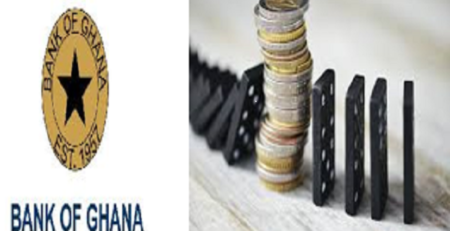Banking sector posted a strong balance sheet position in August 2021 – Report
The Banking Sector Developments Report – September 2021, has revealed that total assets of the banking industry increased by 16.7 percent year-on-year to GH¢166.4 billion as at end-August 2021, although lower than the 23.8 percent growth recorded in the same period of 2020 due to the lingering impact of COVID-19.
The asset growth reflected the rebound in economic activity, with the year-to-date growth rate of 11.4 percent in 2021 marginally exceeding the corresponding growth of 10.6 percent in 2020. The growth in total assets was on account of an increase in domestic assets by 15.4 percent, while foreign assets contracted by 26.3 percent.
This development translated into an increase in the share of domestic assets in total assets from 92.4 percent in August 2020 to 95.2 percent in August 2021 while the share of foreign assets in total assets declined.
Investments in Treasury bills and securities continue to be the preferred asset choice of banks during the pandemic evidenced by banks’ portfolio reallocation in favour of these less risky assets as at end August 2021. The share of bills, securities and equity in total assets increased to 48.3 percent from 44.0 percent, on account of the 28.0 percent year-on-year growth in these investments in August 2021, relative to the sluggish growth in credits.
Growth in gross loans and advances remained subdued reflecting sluggish credit demand and supply conditions, and the increased appetite of banks for government securities due to the elevated credit risks due to the pandemic. Gross loans and advances recorded a year-on-year increase of 8.7 percent to GH¢48.9 billion as at end-August 2021, lower than the 15.7 percent growth recorded in the previous year.
Following a similar trend, net loans and advances (gross loans adjusted for provisions and interest in suspense) also recorded a modest growth of 8.5 percent to GH¢42.3 billion compared with a 14.5 percent growth in August 2020. The COVID-related regulatory reliefs and policy measures, however, continued to support lending activities, with New Advances totalling GH¢21.6
billion for the first eight months of 2021, marginally above the GH¢20.7 billion for the same period in 2020.
The industry continued to record strong and sustained growth in deposits attributed to liquidity flows within the domestic economy.
Deposits recorded a robust growth of 21.8 percent to GH¢111.6 billion as at end-August 2021, relative to the 20.5 percent growth recorded a year earlier.
The COVID-19 fiscal stimulus, payments to contractors, SDI depositors, and clients of Securities and Exchange Commission licensed fund managers as well as increased savings by individuals and firms from the pandemic-induced slowdown in consumer and investment spending in some sectors, contributed to the observed growth in total deposits.
Banks also relied on additional liquidity flows from borrowings to support growth in total assets. Total borrowings increased by 20.3 percent in August 2021, compared with a contraction of 2.1 percent last year. The increase in growth in total borrowings was more on account of an increase in short-term borrowings from foreign sources.
The industry’s shareholders’ funds position remained strong, indicative of a strong capital base within the banking sector to withstand shocks. Albeit lower than the previous year, shareholders’ funds grew by 15.8 percent to GH¢23.5 billion as at end-August 2021, compared to the 21.3 percent growth in August 2020.
The slower growth in shareholders’ funds this year relative to last year reflects in part, the marginal slowdown in profit growth this year as well as the lifting of restrictions on dividend payments by banks put in place at the height of the pandemic.
The strong shareholders’ funds position continues to support the stability and resilience of the banking sector.
Overall, the banking industry posted a strong balance sheet position in August 2021 on the back of increased liquidity flows from deposits, shareholders’ funds, and borrowings. The lingering effect of the pandemic, however, continued to constrain credit growth and contributed to the continuous reallocation of liquidity flows into investments.
Source:3news














Leave a Reply